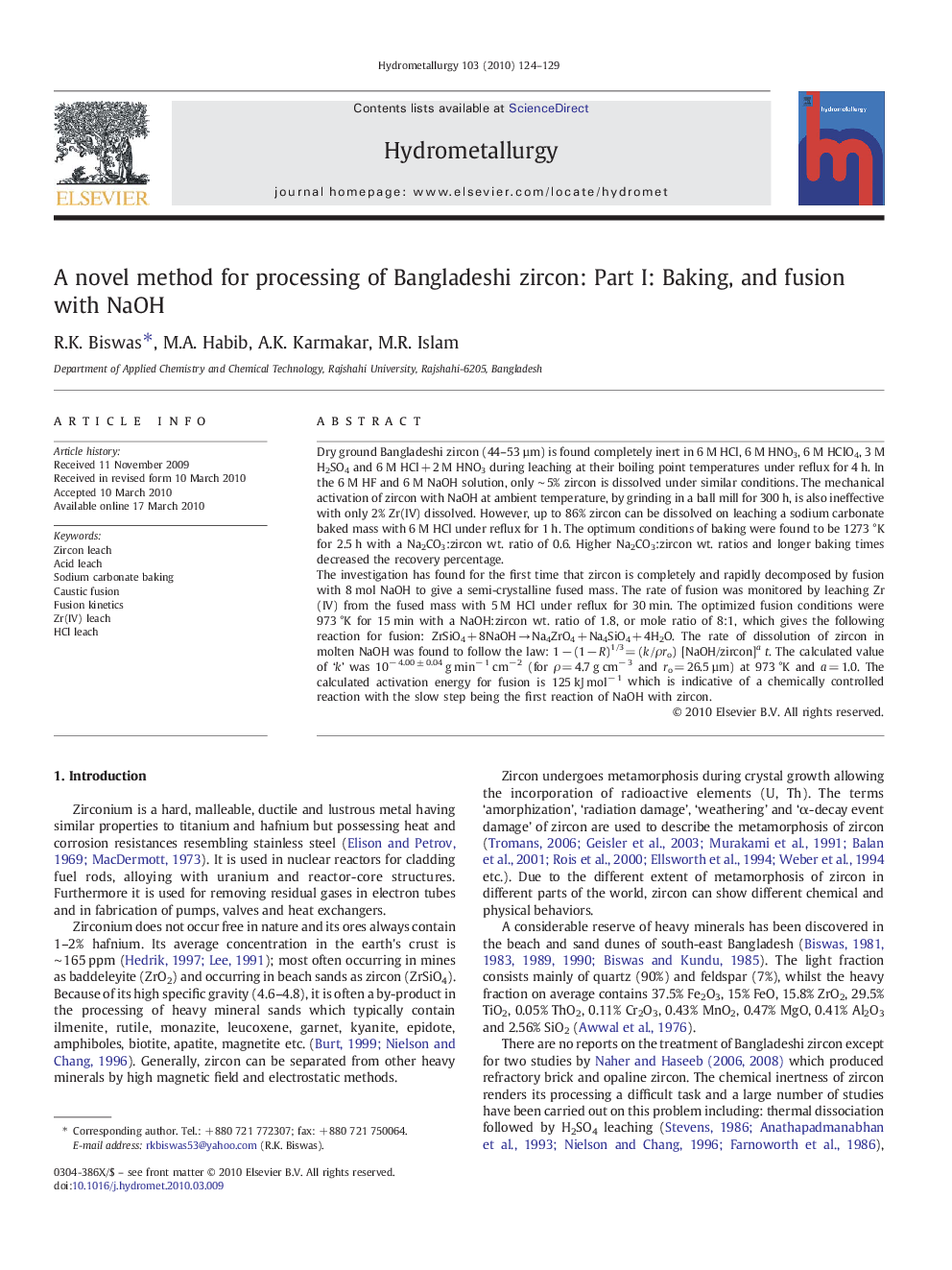| کد مقاله | کد نشریه | سال انتشار | مقاله انگلیسی | نسخه تمام متن |
|---|---|---|---|---|
| 212797 | 462067 | 2010 | 6 صفحه PDF | دانلود رایگان |

Dry ground Bangladeshi zircon (44–53 µm) is found completely inert in 6 M HCl, 6 M HNO3, 6 M HClO4, 3 M H2SO4 and 6 M HCl + 2 M HNO3 during leaching at their boiling point temperatures under reflux for 4 h. In the 6 M HF and 6 M NaOH solution, only ∼ 5% zircon is dissolved under similar conditions. The mechanical activation of zircon with NaOH at ambient temperature, by grinding in a ball mill for 300 h, is also ineffective with only 2% Zr(IV) dissolved. However, up to 86% zircon can be dissolved on leaching a sodium carbonate baked mass with 6 M HCl under reflux for 1 h. The optimum conditions of baking were found to be 1273 °K for 2.5 h with a Na2CO3:zircon wt. ratio of 0.6. Higher Na2CO3:zircon wt. ratios and longer baking times decreased the recovery percentage.The investigation has found for the first time that zircon is completely and rapidly decomposed by fusion with 8 mol NaOH to give a semi-crystalline fused mass. The rate of fusion was monitored by leaching Zr(IV) from the fused mass with 5 M HCl under reflux for 30 min. The optimized fusion conditions were 973 °K for 15 min with a NaOH:zircon wt. ratio of 1.8, or mole ratio of 8:1, which gives the following reaction for fusion: ZrSiO4 + 8NaOH → Na4ZrO4 + Na4SiO4 + 4H2O. The rate of dissolution of zircon in molten NaOH was found to follow the law: 1 − (1 − R)1/3 = (k / ρro) [NaOH/zircon]at. The calculated value of ‘k’ was 10− 4.00 ± 0.04 g min− 1 cm− 2 (for ρ = 4.7 g cm− 3 and ro = 26.5 µm) at 973 °K and a = 1.0. The calculated activation energy for fusion is 125 kJ mol− 1 which is indicative of a chemically controlled reaction with the slow step being the first reaction of NaOH with zircon.
Journal: Hydrometallurgy - Volume 103, Issues 1–4, June 2010, Pages 124–129